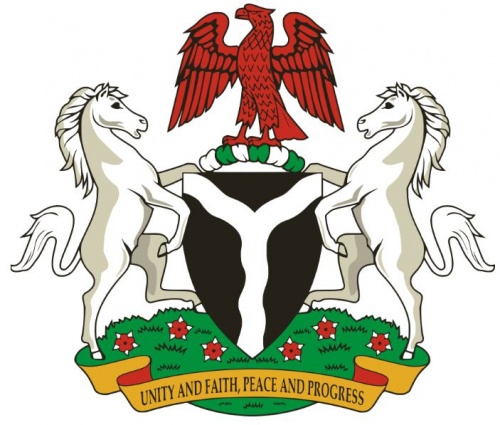National Arms of Nigeria: Difference between revisions
Knorrepoes (talk | contribs) (Created page with '{|width="100%" style="color:black; background-color:#ffffcc;" |width="15%"|50 px|left |width="70%" align="center" |'''Heraldry of the World<br>Civic heraldry…') |
Knorrepoes (talk | contribs) m (added Category:National Arms using HotCat) |
||
| Line 27: | Line 27: | ||
[[Category:Municipalities of Nigeria]] | [[Category:Municipalities of Nigeria]] | ||
[[Category:Granted 1960]] | [[Category:Granted 1960]] | ||
[[Category:National Arms]] | |||
Revision as of 17:17, 21 December 2013
| Heraldry of the World Civic heraldry of Nigeria |
NATIONAL ARMS OF NIGERIA
Official blazon
Sable a Pall wavy argent, supported by two horses Argent, and set for a crest on a wreath, Argent and Vert, an eagle displayed Gules.
Origin/meaning
The arms were officially granted on May 20, 1960.
The wavy pall symbolises the NIger and the Benue river, which join in the country and together form a delta.
The black shield represents Nigeria's power work force, while the two horse supporters on each side represent power and strength.
The eagle represents strength, while the green and white bands on the top of the shield represent the rich soil. The red flowers at the base are a species of Crocus, Nigeria's national flower. This flower was chosen for inclusion in the coat of arms as it is found all over Nigeria.
The motto "Peace, Unity, Freedom" was changed first to "Unity and Faith" and in 1978 to "Unity and Faith, Peace and Progress".
Literature : -
